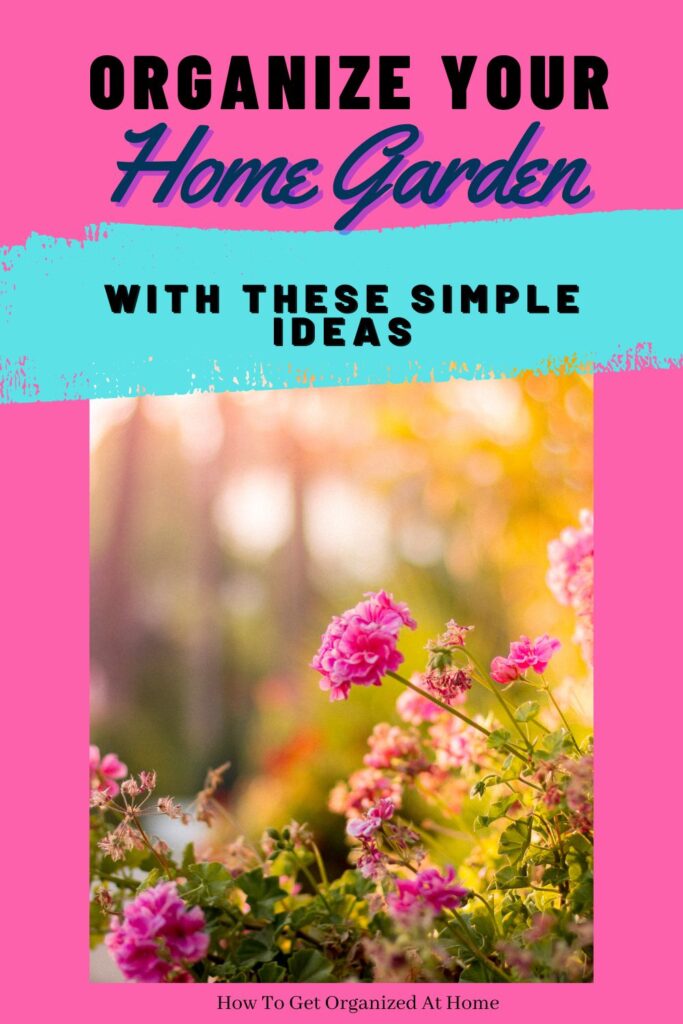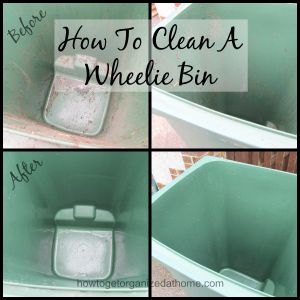10 Steps to Organize and Revamp Your Home Garden
A well-organized garden can be a source of immense joy and numerous benefits. When neatly arranged and free from clutter, it looks more inviting and is easier to manage. It also allows you more time to relax and enjoy the beauty of nature. So, let’s organize and revamp your home garden.
Simple ways to get organized at home and in the garden.
Revitalizing your garden space is essential to enhancing its functionality and aesthetic appeal. Whether hosting family gatherings, seeking a tranquil retreat, or cultivating your favorite plants, a refreshed garden can transform your outdoor space into a more vibrant and enjoyable extension of your home.
Affiliate links are included for your convenience. (This means if you purchase after clicking a link I will earn a small commission which won’t cost you a penny more!) Click here to read my full disclosure and privacy policy.
1) Assess Your Current Garden Space
Evaluating your garden’s condition is crucial because it helps you identify what’s working well and what areas need improvement. Walk through your garden and note overcrowded plants, spots where weeds have taken over, or places that look bare and could use more life.
Moreover, pay attention to how the current layout affects plant health and ease of access. Look for signs of soil erosion or water pooling, which can indicate the need for better drainage or plant repositioning. This initial assessment is your roadmap to a more beautiful and functional garden, guiding you where to focus your efforts for maximum impact.
2) Clear Out the Clutter
Removing old, unused, or broken garden tools and decorations is essential to keep your garden tidy and functional. Every fall, clean and store your garden tools properly to prevent deterioration during the winter months. Rust and wear can shorten the life of your tools and affect their performance come spring.
When deciding what stays and what goes, evaluate each item’s usefulness and condition. If a tool is broken beyond repair or you haven’t used a decoration in the past year, let it go. This process frees up space and makes it easier to access and use the tools in good condition. It ensures your gardening efforts are more effective and enjoyable.
3) Define Garden Zones
Organizing your garden into zones based on plant types or their specific uses can significantly streamline your gardening efforts. Consider grouping your plants by their sunlight needs — some require full sun, meaning six or more hours daily. Meanwhile, others thrive in partial sun for just three to five hours. Zoning your garden this way ensures each plant receives the optimal amount of light without needing constant repositioning.
This method simplifies your maintenance routine and boosts the health and yield of your plants. Plus, zoning makes it easier to water, fertilize, and care for them efficiently. It will save you time in the long run since each zone will have similar care requirements.
4) Upgrade Your Tools
Assess and consider upgrading your garden tools can enhance your gardening efficiency. Examine your shovels, trowels, pruners, and hoses to see if they are still doing the job well or are a bit worse for wear. Pruners and shears can become dull over time, making your work harder than it needs to be.
Also, old hoses might leak and inefficient watering tools can waste water and fail to hydrate your plants properly. Upgrading these essential items can save you time and effort and ensure your garden receives the care it needs. Investing in higher-quality, durable tools can also prevent the need for frequent replacements. It’s a wise choice for your back and budget.
5) Introduce Pathways
Having clear and well-defined pathways in your garden enhances its aesthetic appeal. It improves functionality by providing easy access to all areas. Paths guide visitors through the different zones, allowing them to appreciate every aspect without harming delicate plants. They also help define your garden’s structure to create a sense of order and cleanliness.
- 1.This concrete moldings is design for the DIY lovers, who want to create their own design decoration to make their road more beautiful. To give your pavement and yards some artistic sense.
Prices pulled from the Amazon Product Advertising API on:
Product prices and availability are accurate as of the date/time indicated and are subject to change. Any price and availability information displayed on [relevant Amazon Site(s), as applicable] at the time of purchase will apply to the purchase of this product.
If you need to introduce or expand a pathway, relocate younger trees rather than older ones since they are more adaptable. Make sure to only move trees around late spring or early fall so they can establish their roots in new soil more effectively before winter. This option makes the transition smoother and ensures their health in their new location.
6) Implement Vertical Gardening
Vertical gardening is a fantastic way to maximize your garden space, especially if you’re working with a limited ground area. Growing plants upwards instead of outwards beautifies walls, fences, or trellises while leaving plenty of room for other activities. These gardens make efficient use of space and improve the environment by absorbing pollutants and releasing oxygen, which enhances your home’s air quality.
- Premium Materials - Made from high-quality materials that are fade-resistant and designed for long-term, repeated use
Prices pulled from the Amazon Product Advertising API on:
Product prices and availability are accurate as of the date/time indicated and are subject to change. Any price and availability information displayed on [relevant Amazon Site(s), as applicable] at the time of purchase will apply to the purchase of this product.
Consider using structures like climbing frames, wall planters, or hanging baskets for your vertical garden. Suitable plants include ivy, ferns, and smaller, lightweight plants like succulents and herbs. These setups enhance your garden’s visual appeal and make it a lush, green oasis.
7) Choose the Right Plants
When selecting plants for your garden, choosing species well-suited to your local climate and soil conditions is crucial. Research what naturally thrives in your area, which will reduce the need for extensive care and resources.
For instance, consider the resilient spider plant, known for being low-maintenance. It thrives in indirect sunlight and can grow quickly, making it an excellent choice for novice and experienced gardeners. Spider plants’ adaptability to various indoor and outdoor conditions makes them a practical addition to any garden.
Moreover, consider each plant’s height, color, and texture when arranging them to ensure optimal growth and create visual appeal. Place taller ones toward the back of your garden beds or borders and shorter ones in front so they all receive sufficient light and are visible.
8) Add Garden Accessories
Consider incorporating accessories like birdhouses, wind chimes, or water features to add charm and functionality to your garden. Birdhouses enhance your garden’s aesthetic and encourage birds to visit. They can naturally reduce the number of mosquitoes and fly populations by providing a predator to these pests.
- NATURAL and HANDMADE - The birdhouse is constructed of natural wood and metal. The wooden planks for house body are chipped and painted by hand. The metal pieces strengthen the roof part for the birdhouse, make it very sturdy and durable, and prevent the birdhouse from being damaged from rain, wind, dropping or attacking by other animals.
Prices pulled from the Amazon Product Advertising API on:
Product prices and availability are accurate as of the date/time indicated and are subject to change. Any price and availability information displayed on [relevant Amazon Site(s), as applicable] at the time of purchase will apply to the purchase of this product.
Meanwhile, wind chimes add a soothing auditory element to create a serene atmosphere with gentle sounds. Water features — like a small fountain or birdbath — can serve as the focal point of your garden, adding a sense of tranquility and attracting wildlife.
When selecting these items, make sure they complement your garden’s overall theme and style. Whether you opt for rustic, modern, or whimsical designs, the right accessories can tie everything together and create a more cohesive and inviting space.
Check out this article for gift ideas for the gardener in your life.
9) Follow a Regular Maintenance Schedule
Regular maintenance is essential to keep your garden looking its best. Weekly tasks include watering plants according to their needs, weeding to prevent unwanted plants from sapping nutrients, and checking for pests and diseases. Every month, add fertilizers to replenish nutrients in the soil, prune overgrown branches to promote healthy growth, and mulch to conserve moisture and suppress weeds.
Sticking to this routine lets you maintain the health and vibrancy of your garden and enjoy nurturing your outdoor space. Regular care ensures it remains a delightful retreat throughout the year.
10) Plan Seasonal Refreshes
Plan for seasonal changes to keep your garden vibrant year-round. Monitoring soil moisture levels is crucial during the summer months. Consider mulching or using a soil moisture meter to minimize evaporation and keep your plants hydrated in the heat.
Also, consider adding seasonal decorations such as lanterns for summer evenings, scarecrows and pumpkins in autumn, twinkling lights for winter, and colorful planters or birdhouses in spring. These elements will enhance the beauty of your garden and make it a delightful and engaging space throughout the different seasons.
The Lasting Rewards of a Beautiful Garden
A well-maintained and aesthetically pleasing garden offers long-term benefits beyond visual appeal. It becomes a tranquil sanctuary where you can unwind and connect with nature. Investing time in your garden creates a vibrant and inviting outdoor space that enhances your home’s value and overall quality of life.
Related article: 15 Simple Home Management Skills That Will Make Your Life Better
Article written by: Evelyn Long is an interior design writer who is passionate about helping homeowners keep their homes tidy and decluttered. She is the editor-in-chief of Renovated Magazine, where she writes about current interior design and organization trends.











